Dogbane and Sumac
Oh, boy. Fall is here. I can hear it in the cricket and katydid music, in the swell of cicadas and the whisper songs of vireos. I can see it in the softening colors and smoothing plumage of garden birds and the yellowing heads of goldenrod. It's coming together and coming apart at the same time. Plants are rushing to bloom and fruit; insects are rushing to mate and reproduce; birds are rushing to leave us.
I walk the meadow and look. Dogbane beetles drive their shiny little cars over the leaves of their namesake plant. Every time I walk by there is less plant.
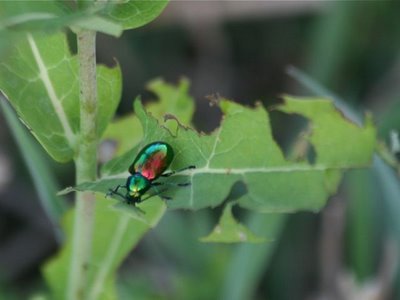 I wonder how it feels to be reflective in this very concrete way. Maybe the beetles wonder how it feels to think so much about everything, all the time. Perhaps we should switch places. But I would miss my supple skin. However iridescent and beautifuly polished an exoskeleton might be, I still think it would feel like I was in a car.
I wonder how it feels to be reflective in this very concrete way. Maybe the beetles wonder how it feels to think so much about everything, all the time. Perhaps we should switch places. But I would miss my supple skin. However iridescent and beautifuly polished an exoskeleton might be, I still think it would feel like I was in a car.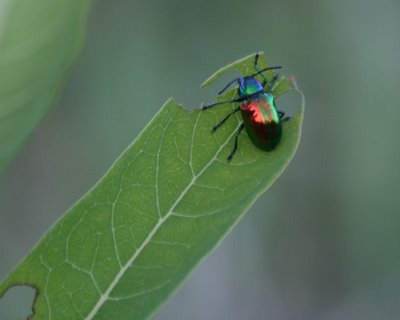
Smooth sumac raises proud seedheads to the sky, food for birds come frost. But what's this on the undersides of its leaves?
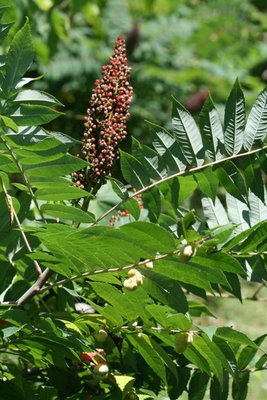
Great hollow lumps cling along the stem, obviously of the plant's making.
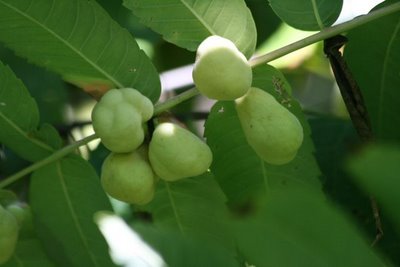 Yes, but why would a plant make something like this? I break one open, to find it filled with small yellow aphids.
Yes, but why would a plant make something like this? I break one open, to find it filled with small yellow aphids.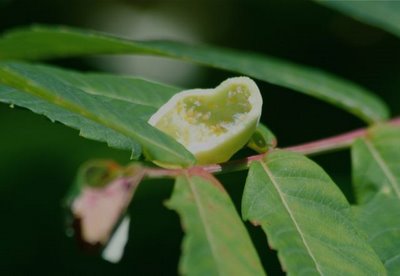
Which came first, bolus or bugs? They're sumac gall aphids, and I can't find anything about how this comes to happen--how these tiny, soft-bodied insects came to be in such a perfect hollow biosphere. I conclude that their mother must have laid eggs in the sumac leaf, and the sumac responded to the insult by creating a lovely capsule around the irritant. I don't know if I'm right, but perhaps the sumac gall aphid would follow the path of gall-making wasps and beetles, chemically co-opting the plant's growth potential into a sort of induced cancer that both feeds and protects its young. Some aphids are parthenogenic, too, and a single female can give birth to a whole raft of exact copies of herself without benefit of fertilization. So the possibility that a single female made her way in, then popped out a bunch of young, must be considered as well.
However the aphid colony came to be here, they're happily sucking plant juices, protected from predators, ironically enough, by the very plant whose energy they're sapping. There's a sociopolitical analogy in here somewhere, but I'm going to stick to bugs.
I draw back, walk on, and look at the evening sun slanting through winged sumac leaves.
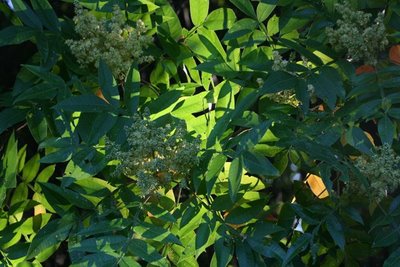 Oh, it's beautiful. Why does low golden light, cricket music rising as night falls, raise such a lump in my throat?
Oh, it's beautiful. Why does low golden light, cricket music rising as night falls, raise such a lump in my throat?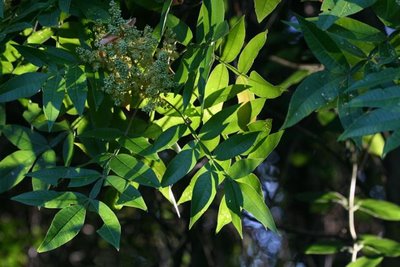
Young tulips, mown off only last summer, madly put forth new growth in September, trying to get too big for the mowing deck.
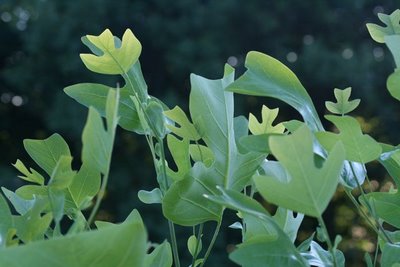 A few more seasons of neglect, and saplings will be trees, and this golden meadow will be dark woods.
A few more seasons of neglect, and saplings will be trees, and this golden meadow will be dark woods.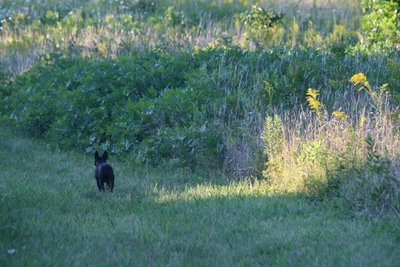
Labels: dogbane beetle, sumac gall aphid






<< Home